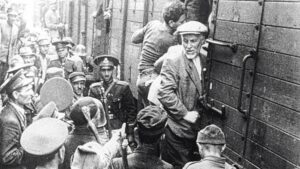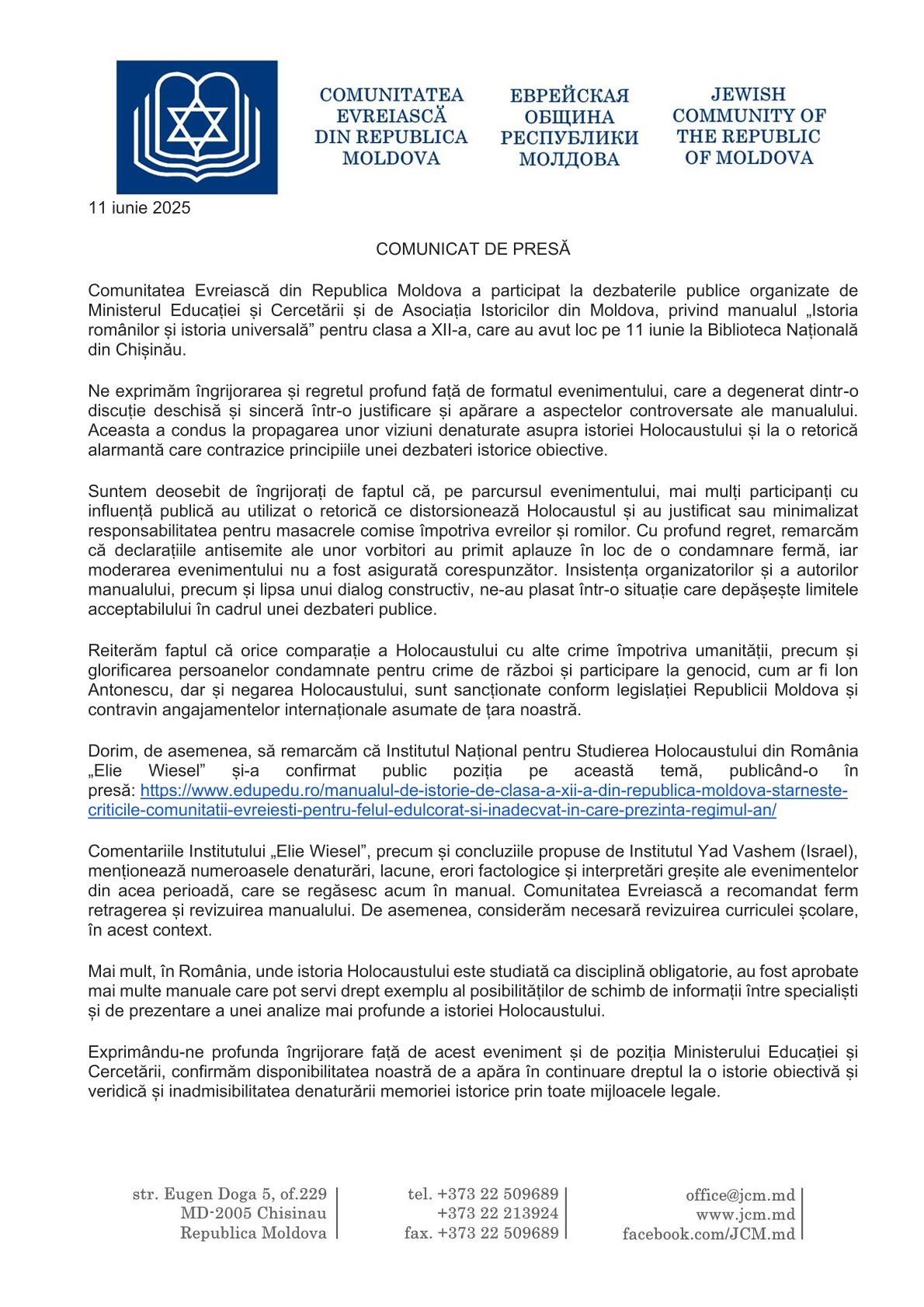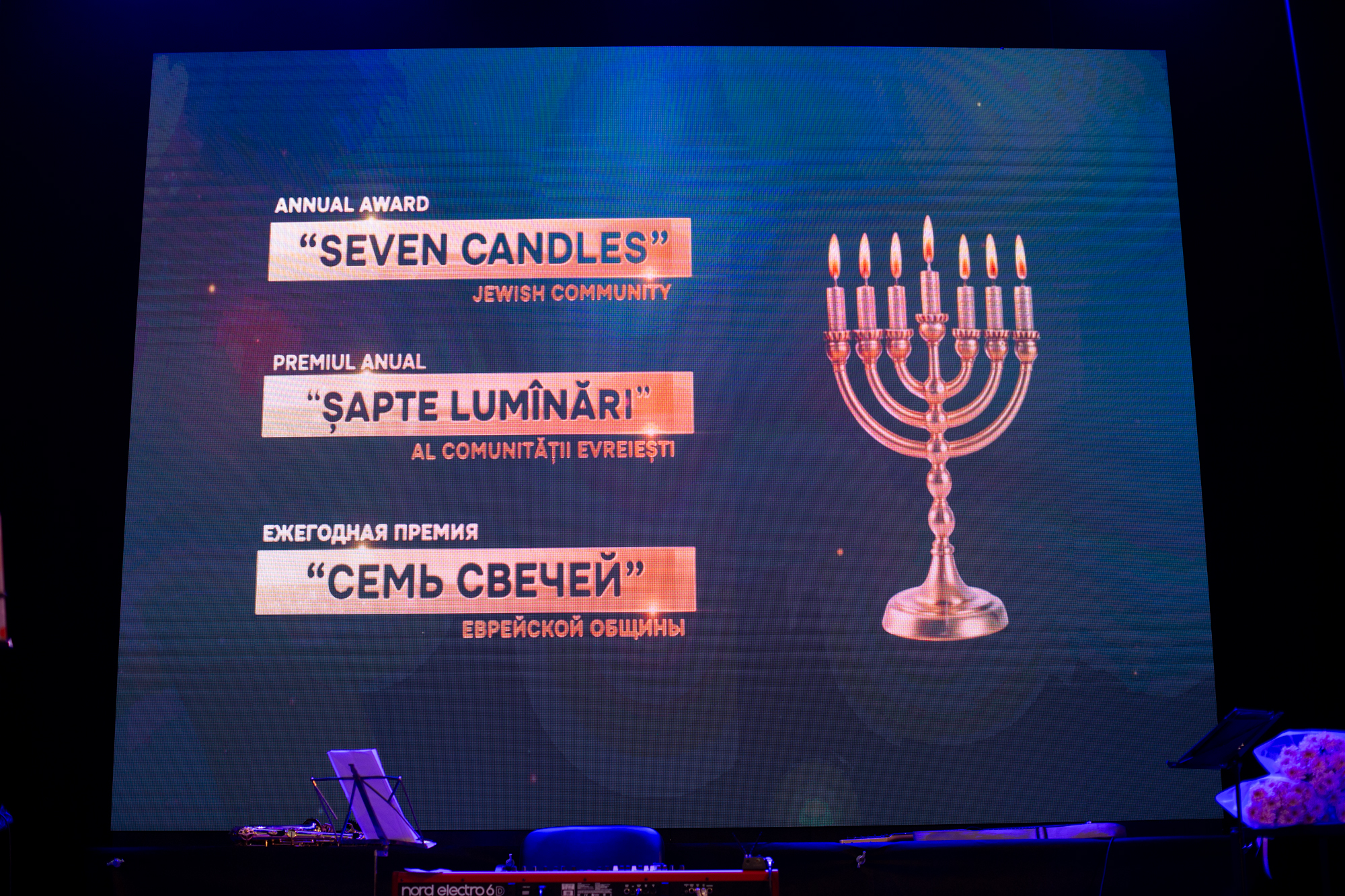82nd Anniversary of establishment of the Chisinau Ghetto

On Tuesday (25 July), the Jewish Community commemorates the 82nd anniversary of the founding of the Chisinau Ghetto. A tragic moment in the history of our city and our country.
History of the Ghetto
On 16 July 1941, German-Romanian troops entered the city of Chisinau. On 24 July, the governor of Bessarabia, General Voiculescu, issued an order to create a Jewish ghetto.
During July 25-26, the Ghetto was set up in the lower part of the city. Around 11,500 people were taken from their homes and driven to the Chisinau Ghetto. They were mostly women, old people and children.
People were forced to live in terrible, humiliating conditions. Many families had to live in one room with poor sanitation and no access to food or medicine. Many people endured sexual and physical abuse. Entrances to the ghetto were guarded by soldiers who prevented inmates from leaving and ensured they remained in the Ghetto.
Every day, 20-25 people died of hunger and malnutrition. Every day, groups of ghetto inmates were recruited for hard labour. Regular executions took place which killed random numbers of people on any given occasion: from a few dozen to 500-700 individuals.
In the autumn of 1941, the entire surviving population of the Ghetto were driven east. During the journey, and in the concentration camps of Transnistria, almost all the prisoners of the Chisinau Ghetto perished. Only 8 former prisoners of the Chisinau Ghetto survived.
Commemorative events
The Jewish Community of the Republic of Moldova will organise a ceremony in which participants are invited to lay flowers and stones in commemoration to the victims on 25 July at 13.00 at the Monument to the Victims of the Kishinev Ghetto. Later that day, at 18:30, the Jewish Community will also lead a one and a half hour tour of important sites related to the Ghetto
https://www.facebook.com/events/223574813990115?ref=newsfeed
Please note the tour will be in Russian.
The tour will be led by Dr Roman Rabinovich, a historian who serves as coordinator of the Orhei Museum of Jewish History and Heritage Advisor of the Jewish Community. The tour will take place along the northern, eastern and southern borders of the ghetto: the Monument to the Prisoners of the Chisinau Ghetto, Maternity House No. 2 (former Old Square – the centre of the ghetto), Ureke St., Music Library (former Jewish cemetery of the 18th century), Sf. Gheorghe Street, Kozhokarilor Street.
Where: Start at the monument “Prisoners of the Chisinau Ghetto”, Jerusalem Street.
When: Tuesday, 25 July 2023
Time: 18:30-20:00
Photo credit: Elderly Jews, with their baggage, loaded onto a cart for deportation from the Chisinau ghetto to Transnistria, Oct. 1941 (Georg Westermann Verlag). Offered by the National Agency of Archives of Moldova














